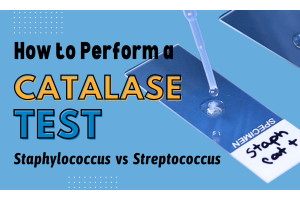When Fast Food & Microbiology Make News, It’s Rarely a Good Thing.
Since 1947, when the first drive-through restaurant was opened by Sheldon “Red” Chaney in Springfield, Missouri[1], the term “fast food” has become a staple of the American vocabulary. McDonalds, Burger King, White Castle, In & Out, and Taco Bell: all of these have become so monolithically important to everyday life, that many can recite the menus by heart or tell you the restaurant name just by its logo or company colors.
The numbers do not lie. The American population spends over 100 billion dollars on fast food every year with the average person spending an estimated $1,200 on fast food over the course of one year. Fast food makes up an estimated twelve percent of the average American child’s caloric intake. Seventy percent of people in the U.S., an estimated 223.3 million people, eat fast food three or more times a week! [2]
Now while most people have recently become incredibly concerned with the origin and dietary supplementation of fast food meats, few think of the food testing behind their three dollar burger. On the whole, consumers are alarmingly ignorant of the perils that proper microbial food testing prevents. That is until something tragic happens.
 Brianne Kiner, nine when diagnosed, now suffers from diabetes due to the outbreak
Brianne Kiner, nine when diagnosed, now suffers from diabetes due to the outbreakIn 1993, Jack in the Box was enjoying 40 long years of financial success, but one outbreak nearly caused the chains collapse. An outbreak of Escherichia coli O157:H7 led to 700 becoming sick and the hospitalization of 171 people, 45 being children under the age of 10 years old. Of the 45, 38 suffered serious kidney problems and 21 required dialysis. However, more tragic still were the deaths of four children, all under the age of six. [3]
The contamination was not the fault of one single incident, but instead a string of small oversights that when combined became deadly. After an investigation by the Centers for Disease Control and Prevention (CDC), it was found that five slaughterhouses in the United States and one in Canada were the likely sources of the contaminated lots of meat. Following the improper testing of these facilities and their products, the contaminated meat would make its way to the kitchen. Jack in the Box employees, overwhelmed by an ongoing promotion, disregarded the Washington state law requiring burgers to be cooked to 155 degrees Fahrenheit (68 degrees Centigrade). Instead, they adhered to the federal standard of 140 degrees Fahrenheit (60 degrees Centigrade). [4] This fifteen degree difference cost the lives of four children and injured almost two hundred others. The negative publicity of this outbreak in turn cost Jack in the Box and the slaughterhouses responsible millions of dollars in revenue.
When it comes to proper food testing of E. coli O157, don’t let your company become another breaking news story. Keep your customers healthy by testing your raw ground beef and raw beef trim with the Xpress™ Rapid Pathogen Detection System. With the fastest O157 detection available on the market, the Xpress™ Rapid Pathogen Detection System will deliver the results you need faster, ensuring your product is safe and goes out the door sooner.
Learn more about the Xpress™ Rapid Pathogen Detection System.
Want to see it in person? Contact us for a free demo of the system.
[1] "Popular Mechanics". Books.google.com. p. 13. Retrieved 2016-02-08.
[2] https://blog.partnersforyourhealth.com/blog/blog/bid/85971/shocking-fast-food-statistics-you-should-know, Retrieved 2017-02-08
[3] Huemer, Richard P.; Challem, Jack (1997). The Natural Health Guide to Beating Supergerms. New York: Pocket Books. p. 8. ISBN 978-0-671-53764-7.
[4] Porterfield, Elaine; Berliant Mcclatchy, Adam (June 17, 1995). "Jack In The Box Ignored Food Safety Regulations, Court Documents Say". The Spokesman-Review Co. The Spokesman-Review. Retrieved 5 June 2014.








